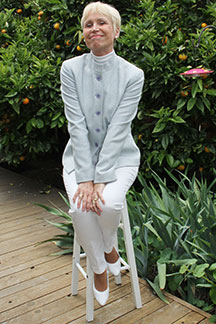In 2017, Berlin’s real estate prices rose an average of 20.5%. Only a decade ago, Berlin’s mayor described the city as “poor but sexy.” But during the past few years, that picture has changed. The city’s economy is now booming, and the city’s budget is balanced. Foreign buyers flock into Berlin’s residential and commercial property markets. I guess Berlin is still sexy. But the changes also have a downside. Along with Berlin’s skyrocketing property prices, the city’s traditionally affordable rents and hip arts scene may soon be a thing of the past.
Cities at the top of the world’s real estate spiral
According to Knight Frank, one of the world’s leading commercial and residential real estate advisory and research firms, the German cities of Berlin, Hamburg, Munich and Frankfurt ranked in the top 10 of cities with the world’s fastest real estate price increases last year. In 2017, Berlin moved into the number one position following several years of soaring property prices. Since 2004, Berlin’s real estate prices have increased by more than 120%. According to the Knight Frank global residential cities index (compiled from official government statistics or central bank data), in 2017 the 10 fastest rising property markets in the world were:
- Berlin 20.5%
- Izmir 18.5%
- Reykjavik 16.6%
- Vancouver 16.0%
- Hong Kong 14.8%
- Budapest 15.5%
- Hamburg 14.1%
- Munich 13.8%
- Rotterdam 13.4%
- Frankfurt 13.4%
Despite the steep increase,Berlin’s real estate prices are still relatively affordable in comparison to those in London and New York. Flats in prime parts of the German capital fetch only about a third of the price of an equivalent-sized property in London.
What causes Berlin’s real estate prices to soar?
Berlin’s real estate prices have been fueled by low interest rates and a fast-growing population. The city’s population has grown by about 50,000 per year over the past five years to 3.5 million. It is projected to reach 4 million by 2035. Housing units built have not kept up with the growing population. Meanwhile, investors from southern Europe shifted their assets northwards during the Eurozone debt crisis. Asian and US investors looked to Germany when returns in their own markets started to diminish. Brexit became another factor. It is a classic case of high demand and low supply.
Another factor is Berlin’s low home ownership rate. With only 15%, Berlin’s has one of the lowest ownership rates among cities in developed countries. The reason is that at the end of World War II 40% of all of Berlin’s housing was reduced to rubble. To create adequate housing opportunities, the government established stringent housing laws and built large apartment blocks that encouraged renting. To this day, renting remains the preference of most Berliners because the city’s rental market offers high-quality, affordable tenancies with a strong government commitment to maintain affordability while homeownership requires sizable down payments.

Real estate prices are rising in these typical residential and commercial areas of Berlin. Photo © J. Elke Ertle, 2016. www.walled-in-berlin.com
For a sneak peek at the first 20+ pages of my memoir, Walled-In: A West Berlin Girl’s Journey to Freedom, click “Download a free excerpt” on my home page and feel free to follow my blog about anything German: historic and current events, people, places and food.
Walled-In is my story of growing up in Berlin during the Cold War. Juxtaposing the events that engulfed Berlin during the Berlin Blockade, the Berlin Airlift, the Berlin Wall and Kennedy’s Berlin visit with the struggle against my equally insurmountable parental walls, Walled-In is about freedom vs. conformity, conflict vs. harmony, domination vs. submission, loyalty vs. betrayal.



















